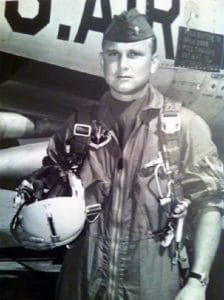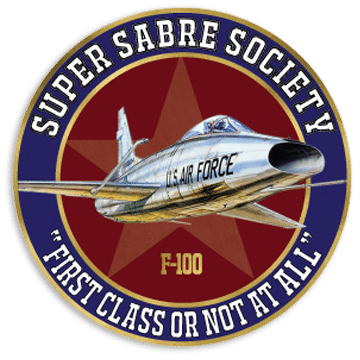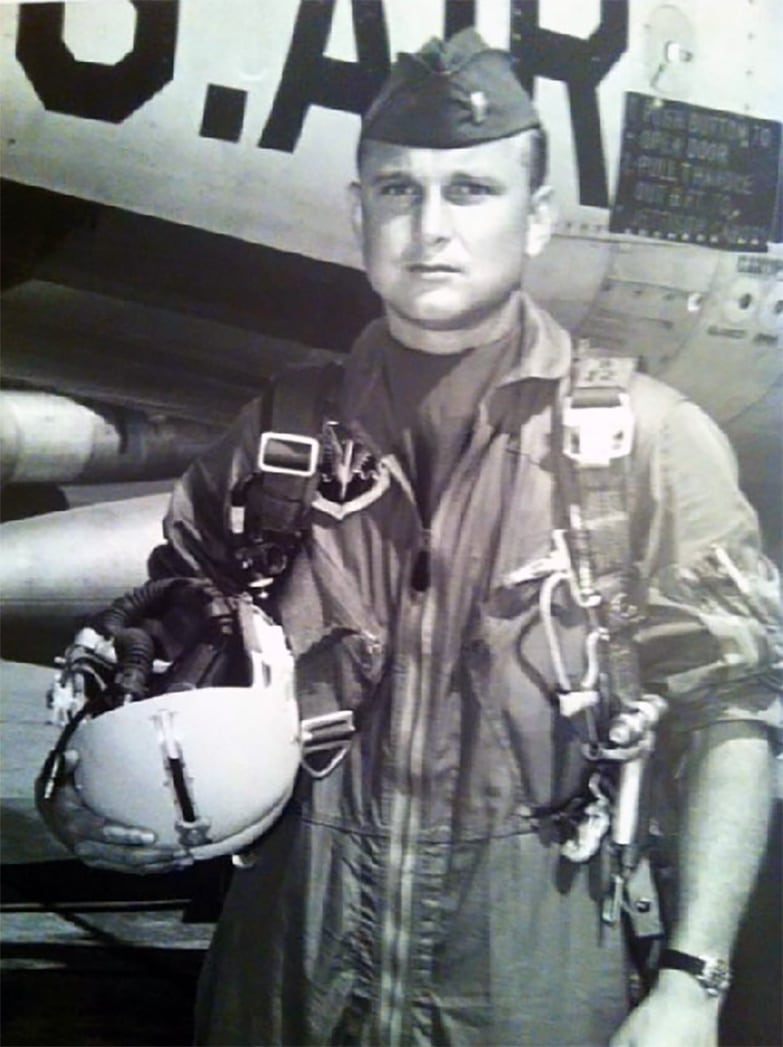Milt Songy flew the F-100 from 1960-1963 with the 35th Tactical Fighter Squadron out of Itazuke AB, Japan, and from 1963-1969 with the 613th Tactical Fighter Squadron out of England AFB, LA, and Torrejon AB, Spain. He ejected safely from his F-100 when it crashed on May 16, 1967 near El Escorial, Sevilla da Nueva, Spain.
 Milt Songy – Caterpillar Club
Milt Songy – Caterpillar Club
Captain, 613th TFS
Torrejon AB, Spain
16 May 1967
This tale takes about a six-pack to tell properly, but I’ll do my best to give you the “short” version…
Our Fighter Wing, the 401st TFW, is tasked to put on a Fire Power Demonstration for a group of NATO folks at the Zaragoza Gunnery Range in eastern Spain. The team is made up of 10 aircraft: our 4 F-100s from the 613th, 2 F-100s from the 353rd, and 4 F-4s from USAFE.
It’s a partly sunny day now, with a westerly breeze of 15 to 20 knots and a line of very heavy cumulonimbus clouds over Madrid, which lies directly in our flight path. This will necessitate a quick join-up to avoid being separated in the weather and possibly delaying the “showtime” at Zaragoza.
All 10 birds make their engine run-ups in position, on the runway at the same time, and then we launch. I’m flying in the No. 3 slot of the first group with Jim Sather (RIP) as No. 4 on my wing. He is a great “stick,” so I’m not worried about him hanging on during this quick join-up. I pull up on Lead’s ( Dick Robbins ) wing about five seconds before we hit the clouds, which are the type that are so thick at times you could only see the wingtip of your leader. Everything is peachy … for a little while.
Then, with the force of a large hammer to the helmet–BANG! A deafening explosion, smoke, lights on, stick frozen, aircraft gyrating wildly … and I have no control. The explosion is so loud that our Flight Lead hears it and thinks that he has the problem, but then No. 2, Harry Ulvila ( RIP), lets him know that No. 3 is on fire. I immediately think that Jim ( No. 4 ) has rammed me and it was time to get out of this thing–so I do!
The clouds are so dense that Jim doesn’t see me eject and is now flying wing on an empty Hun! How’s that for keeping the light on the star? At first, I can’t see a thing because my helmet visor is completely frosted over and the ejection sequence is just a blur ending with the shock of an opening parachute. Now things are very, very quiet … but not for long.
The ride down, and subsequent H-43 recovery is where the really exciting stuff occurred, but that would require the 6-pack. I’ll tease you with this: 4 Huns, then 2 Huns, then 4 F-4s–all going up the same departure, IMC, thick soup … and then here’s Uncle Milty hanging in his chute! Ask me how loud are F-100s that fly by you VERY, VERY close, and I can tell you. Later I asked the Lead of the 2-ship behind us what he saw because he was trying to join up with us when we went into the soup. He said, “I saw nothing and when I heard your May Day followed by the emergency beacon I knew that you were somewhere in front of me, very close. I could not see because of the clouds, so I closed my eyes.” I asked why?? He said, “I didn’t want to see you right before I hit you!” Makes sense to me.
Thank God the F-4s were far enough behind that they had time to break off the departure route.
A few seconds later, I had my first real, and I mean REAL, conversation with God, and two weeks later He let me know why I was allowed to make this successful nylon letdown–my first son was born! Now our 2-year-old Aimee has a brother, Milton Jr. and 6 years later another son, Paul Gerard, now Lt. Col. USAF. Thank You, Lord!
A very memorable experience indeed and a successful ejection with a few terrifying asides along the way.
Oh, almost forgot to tell you what caused this momentous event. A leak in the infamous 16th stage air duct torched the fuel and hydraulic lines. The ensuing explosion took out all the good things a Sleek and Shiny, Slick-wing Super Sabre needs to fly!
~ Milt Songy



